..
CONTINUED FROM PREVIOUS POST
**************************************************
[video=youtube;FA5YiJXGfnY]https://www.youtube.com/watch?v=FA5YiJXGfnY [/video]
It seems the
"Ruta Interocéanica" was created primarily to facilitate trade between Brazil and China. Although the sea-distance from Sao Paolo to Shanghai in nautical miles across the Atlantic and Indian Oceans is roughly the same as the distance from Peru to China across the Pacific (about 10,000 nm), there are still logistical advantages for central Brazil in having access to the Pacific across the Andes, as some of the videos posted above make clear -- see
http://www.sea-distances.org. But of course the
"Ruta Interocéanica" was also built to facilitate inter-regional trade, between amazonian Peru and central Brazil.
Since 2010 a more southernly
"Ruta Interocéanica" crossing Bolivia has also been completed -- see
https://es.wikipedia.org/wiki/Ruta_interoceánica_Brasil-Bolivia-Chile-Perú ,
https://translate.google.co.uk/translate?hl=en&sl=es&tl=en&u=https%3A%2F%2Fes.wikipedia.org%2Fwiki%2FRuta_interoceánica_Brasil-Bolivia-Chile-Perú ,
http://www.biobiochile.cl/2013/03/2...ca-que-unira-el-atlantico-y-el-pacifico.shtml , and
https://translate.google.co.uk/tran...ca-que-unira-el-atlantico-y-el-pacifico.shtml . And another cross-Andes route is planned further south, connecting Brazil more directly to Chile -- see
https://es.wikipedia.org/wiki/Ruta_interoceánica_central , and
https://translate.google.co.uk/translate?hl=en&sl=es&u=https://es.wikipedia.org/wiki/Ruta_interoceánica_central&prev=search.
The general organizing agency here is
IIRSA, the
"Iniciativa Para La Integración de la Infraestructura Regional Sudamericana" -- see
http://www.iirsa.org ,
https://es.wikipedia.org/wiki/Iniciativa_para_la_Integración_de_la_Infraestructura_Regional_Suramericana ,
https://translate.google.it/translate?hl=it&sl=es&tl=it&u=https%3A%2F%2Fes.wikipedia.org%2Fwiki%2FIniciativa_para_la_Integración_de_la_Infraestructura_Regional_Suramericana , and
http://www10.iadb.org/intal/intalcdi/PE/2012/10050a03.pdf. IIRSA's general objective is to create multiple "trans-Andean" corridors that will promote interregional trade, and hence, economic development:
![clip_image001_thumb[1].jpg clip_image001_thumb[1].jpg](https://forum.expeditionportal.com/data/attachments/242/242475-7954faa87b1edcb6cd7dca531b00e295.jpg?hash=eVT6qHse3L)

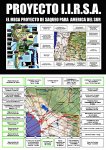
But needless to say, like all development initiatives
IIRSA is controversial, because where highways and economic development go, deforestation (for instance) necessarily follows, development will not benefit all social classes equally, previously isolated uncontacted Amazonian tribes might be wiped out by disease, etc. etc. See the excellent articles, both in English, at
http://www.argentinaindependent.com...argentina/interoceanic-highway-road-to-ruin// and
http://www.theguardian.com/environment/2011/jul/14/pacific-atlantic-route-brazil-peru for comprehensive discussion of the negative aspects of the
"Ruta Interocéanica".
Here are a few more images of the
"Ruta Interocéanica", to round things out:


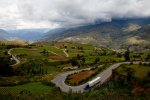


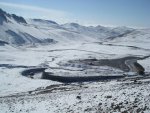
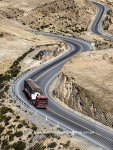
Now this is not the place to spend another 20 posts once more dispelling out-dated misconceptions of what road conditions are like in Second World countries, as I did (for instance) vis-a-vis road conditions in Tibet and China, much earlier in the thread. It's also a pointless exercise, because some participants on ExPo positively
want road conditions worldwide to be much tougher than they really are. A certain kind of ExPo participant positively
wants transportation infrastructure outside the First World to be nothing more than mud tracks that always require rock-crawling with a Unimog. That way they can imagine the world as a more "romantic" place to overland and explore. This kind of ExPo participant hates seeing videos like the following two below, videos of pristine-new super-highways in Brasil that look like American Interstates once did, back in the 1960's....:ylsmoke: :
Also see the playlist at
https://www.youtube.com/channel/UCP-Cg9CAZynGPjozApE0kVQ, for an incredible video record of one truck driver's travels through Brasil, driving excellent roads the whole way.
For better or worse, Google and YouTube are now available to everyone. So all that anyone needs to do is spend some time looking at videos and checking out road conditions on the ground with Google maps, and it soon becomes apparent that the world's highways are much better than some expedition types want to allow. They can claim all the "personal experience" they like. But I would much rather believe my own eyes, and Google maps. And unlike them, I have no special vested interest in "exploring", and I harbor no residual neocolonial fantasies about driving an "expedition" vehicle down a mud track. Rather, what interests me -- and, I think, what interests most elderly people -- is sojourning. So if the road between the TerraLiner's base camp A and base camp B is a newly built Brasilian superhighway in mint condition, then I say "Great!"
Furthermore, many conceptions of road conditions outside the First World are based on trips that people took 10, 15, or 20 years ago. Such ever-so-terribly-important "personal experiences" then get stuck in amber inside unimaginative skulls. The natural tendency after visiting a country is to mistakenly imagine that it will remain unchanged, fixed in suspended animation, until one returns. After all, the memory inside one's own skull hasn't changed, so why should the country change? But countries have independent lives of their own that have nothing to do with us. Typically this means that when one visits the same country again 10 years later, road infrastructure in particular will have vastly improved. Now granted, some countries change for the worse, especially if they've suffered a civil war since one last visited. But over the last 20 years most Second and Third World countries have changed for the better, with improving Human Development Indices, growing economies, and improving infrastructures. On this topic see Hans Rosling's inspiring TED talks at
https://www.youtube.com/watch?v=jbkSRLYSojo ,
https://www.youtube.com/watch?v=usdJgEwMinM ,
https://www.youtube.com/watch?v=Sm5xF-UYgdg , and
https://www.youtube.com/results?search_query=hans+rosling. Either way, even after just 10 years one's "personal experiences" of other countries become next to worthless, because other countries will have changed so much.
This story of improving road infrastructures is being repeated over and over again around the world. It then seems to me that most Second-World countries and many Third-World countries will have plenty of roads that are perfectly adequate to handle a vehicle as large as the TerraLiner. After all, the TerraLiner will be no bigger than the buses that drive the
"Ruta Interocéanica" shown in the videos above. At 12 m long the TerraLiner will probably be shorter, because most long-distance buses in the Americas tend to be the maximum length, around 13 - 13.72 m. The only difference is that the TerraLiner will be towing a trailer, and the main vehicle of the TerraLiner will have either all-wheel steering or rear-wheel steering. So wherever a big truck or a big bus can go, the TerraLiner will be able to go as well.
For more information about international bus routes in South America, see
http://goperu.about.com/od/gettingaroundperu/p/Ormeno-Peru-Bus-Company-Profile.htm ,
http://www.grupo-ormeno.com.pe ,
http://www.grupo-ormeno.com.pe/nosotros.html ,
http://www.grupo-ormeno.com.pe/pano2/pano2.html?bus=2 ,
http://www.grupo-ormeno.com.pe/pano1/pano1.html ,
http://www.grupo-ormeno.com.pe/destinos.html , http://www.grupo-ormeno.com.pe/contacto.html , and
https://www.youtube.com/watch?v=6iBKdBldybg ;
http://www.cruzdelsur.com.pe ,
http://www.cruzdelsur.com.pe/empresa/quienesomos ,
http://www.cruzdelsur.com.pe/destinos/pasajes-argentina-bus ,
http://www.cruzdelsur.com.pe/destinos/pasajes-chile-bus ,
http://www.cruzdelsur.com.pe/destinos/pasajes-ecuador-bus ,
http://www.cruzdelsur.com.pe/destinos/pasajes-colombia-bus ,
http://www.cruzdelsur.com.pe/servicios/internacional ,
http://www.cruzdelsur.com.pe/servicios/cruzero ,
https://www.youtube.com/watch?v=_zVkjkPcMXk ,
https://www.youtube.com/watch?v=rY6Kci5snmE , and
https://www.youtube.com/watch?v=_zVkjkPcMXk .
Now the TerraLiner does not need to be able to do more than this, because once again, it will be designed for sojourning. The SUV contained in the the towed trailer "garage" will do the exploring. The TerraLiner itself does not have do any exploring. The TerraLiner only needs to be able to drive into a farmer's field, and then back out again. The TerraLiner will merely function as a base camp.
If you don't like the kind of logistical pattern this implies,
campo, that's perfectly understandable. This implies a pattern of "slow travel" in which a retired couple with lots of money and leisure time will drive the TerraLiner from point A to point B, and will then stay put for 3 months, only using the SUV to explore the surrounding countryside. Also, because they will merely travel from one farmer's field to the next, the TerraLiner will not need to enter cities. It's not designed to. Rather, once again, that's the job of the SUV.
The pattern of travel that is precisely being excluded here, is the sort of "fast travel" that middle-aged people tend to do in mid-sized motorhomes: a week here, a week there, one day here, one day there, one new country every 10 days....
 ...
... I am not designing the TerraLiner for the mid-sized market, and I am not designing the TerraLiner for that kind of fast travel.
**************************************************
4. I will be changing the title of the thread, when ExPo forum administrators finally respond to my query....
**************************************************
I have been saying all of this as clearly as I can since post #1524 on page 153 at
http://www.expeditionportal.com/for...igid-Torsion-Free-Frame?p=1923940#post1923940 . I would like to change the title of the thread, so that it is no longer ambiguous, and so that I no longer have to deal the problem of participants thinking that I have in mind one thing, when in fact I've always had in mind something rather different. Many participants simply assume that I must have in mind
their ideal of the perfect mid-size expedition motorhome. But I am not them, and I am also not designing for them. Rather, I am designing for a specific market demographic. I am designing for
AARCWPOMs: Active & Adventurous Retired Couples with Plenty of Money.
Unfortunately, my attempts to change the title of the thread have so far failed. I've written to the forum administrators, but so far none of them have responded. I may have to figure out a way to contact Scott Brady directly, the owner of the website. Usually it's no problem changing the title of a thread. One simply changes the tittle of the first post in the thread, and the thread title automatically changes as well. But for some reason this is not working. The new title of the thread will be:
TerraLiner: 12 m Globally Mobile Beach House/Class-A Crossover with 6x6 Hybrid Drivetrain
If you don't like the new title, I can accept that. The TerraLiner will simply not be the motorhome of
your dreams. But there is no such thing as the "ideal" or "perfect" motorhome for everyone, and it is foolish to think otherwise.
**************************************************
5. The TerraLiner still needs 6x6 AWD to glamp in farmer's fields
**************************************************
Now you
did make one quasi-design argument, about the need for the TerraLiner to be accompanied by other big vehicles to aid with recovery. But here again you simply assume that the TerraLiner will want to go to the same places that mid-size motorhomes go. Or that the TerraLiner will do lots of off-road traveling. Alternatively, you suggest that such a large vehicle won't be able to undertake
"excursions in nature". Here your point basically comes down to,
"The TerraLiner won't be able to do the same things that a mid-sized motorhome can do".
The obvious reply here is,
"You are right. But so what?"
I already know that, and I knew that over 2 years ago, even before I started the thread. This is no big revelation. To repeat, I
don't want the TerraLiner to be able to do the same things that a mid-sized motorhome can do. The TerraLiner will be for sojourning, for staying put for 3 months, and not for exploring. The TerraLiner will only be on the road when it travels from base camp A (where it stayed for 3 months) to base camp B (where it will stay for another 3 months) to base camp C (another 3 months), and so on. The TerraLiner will function much like a 45-foot American Class A, serving primarily as "base camp" for its owners. The TerraLine will function more like a mobile house, if you will. And it goes without saying that an American Class-A motorhomes cannot do the same things as 30-foot Class-C motorhomes. To state as much is simply to state the obvious, nothing more.
However, to repeat (I am having to repeat myself a lot in this post....

), the TerraLiner will need to glamp on farmer's fields. So the TerraLiner will still need big Michelin XZL tires, and 6x6 AWD. So too, the TerraLiner will need to be able to drive corrugated gravel highways like the Tanami road. The Tanami road is a very wide highway, one that is regularly driven by big Australian road-trains. But the Tanami is also a "bad road", with sections that are severely corrugated -- see
https://en.wikipedia.org/wiki/Tanami_Road . So the TerraLiner will need excellent suspension.
**************************************************
6. The TerraLiner has always been moving in another direction.....
**************************************************
I already made this point in my reply to
thjakits, so here I am once again repeating myself. If you need to think that the TerraLiner was moving in one direction, and is now moving in another, then I don't have a problem with that. But I see things differently.
From the very beginning of the thread, I've made it clear that I wanted to design for a wealthy retired couple. From the very beginning I also wanted to keep things "loose" and "open", because I wanted the TerraLiner design process to be program-driven, driven by my gradually evolving sense of what such a couple would want in a globally capable motorhome. Thread participants like yourself kept wanting me to nail things down in terms of size, so I obliged, and guesstimated that perhaps a motorhome in the 9.5 to 10.5 m range would suffice. But this was never more than just a very rough guess, and the length of the TerraLiner has never been as important to me as its actual function, "use", or "program". So I see my thinking as having evolved in a very natural, very organic way. As such, I personally don't think that the thread's direction has changed at all.
I kept on asking myself,
"What are the American precedents, in terms of the full-time, Class-A retired lifestyle?" As I found myself researching blogs that document that lifestyle, I gradually realized that retired couples in the United States
don't want what you want,
campo. Here I am assuming that you are middle-aged, not yet retired, and that you still work for a living. I could be wrong about this; I am just guessing. Rather, what retired couples in the United States who've adopted the Class-A motor-homing lifestyle want to do, is slow-travel. Yes, they want to travel, but at a much slower pace, living 3 months here, 5 months there, 2 months somewhere else. And because their motorhomes often become their primary residences, they want them to be as big as possible, so that sojourning will be as comfortable as possible.
As I thought things through, I could see no reason why the same
"RV full-timing lifestyle" could not happen at a global level, too. But to travel the globe, retired couples with money will need a different kind of motorhome, one that can glamp in farmer's fields, instead of RV parks. They will still want a fully integrated interior, slide-outs, lots of space, and a high-specification "luxury" interior. What they would not want, and what they will not need, is the ability to "explore" at a fast pace, changing countries every 10 days. Instead, they will want to transfer to the global level the same pattern of travel that they have developed in the United States, one in which a 45-foot Class-A motorhome serves primarily as a "base camp", and a towed SUV allows them to run about, do a bit of "exploring", and fetch groceries.
So I see myself in this thread as merely growing more "attuned" to the needs of my target demographic.
Furthermore, I certainly never thought that it was my obligation or "job" in this thread to design for the needs, preferences, or hopes of middle-aged thread participants. Even if most thread participants personally want a mid-size "expedition" motorhome, one that strikes a balance between sojourning and exploring, it's not my obligation in this thread to design it for them. It's not my obligation to dedicate this thread and its contents to their wishes and needs. That was never the thread's intent from the beginning, and it's certainly not the thread's intent now. Some may have then misinterpreted the thread's intent. But that's a different matter from saying that the thread has "changed direction." On my own view, it has not changed direction at all.
**************************************************
7. Please read pages 153 to 158
**************************************************
Campo, please, if possible,
please try reading everything that I wrote from page 153 onwards, especially pages 153 to 158, at
http://www.expeditionportal.com/for...igid-Torsion-Free-Frame?p=1924020#post1924020 . I am now merely repeating myself, and this is getting tedious. I cannot tailor the arguments and write hand-crafted posts in response to every thread participant who still just doesn't "get" it. Almost everything you wrote in your post merely repeats arguments made by
thjakits. And I already replied to all of those arguments, and then some; just read the last 30 pages. So it's a bit maddening having to repeat the same arguments again, perhaps because you didn't read the correspondence with
thjakits with sufficient care?
I know that
Haf-E,
Joe,
Safas, and
Iain all do "get it". They at least understand the concept that I am trying to develop here, even if it is not their own, preferred, personal ideal of what a globally capable motorhome should look like. I am willing to write this current post to you, because you have been a wonderful contributor to the thread, and so perhaps you deserve a more "tailored" response. I also understand that you are dealing with a language barrier.
Furthermore, I figure that if I respond in depth three or four times to exactly the same set of merely repeated conventional objections, then eventually others reading this will "get it", too. And so I won't have as much work to do in future, and I won't need to bring others up to speed as well. But honestly, I won't have much time in future to write more posts like these, posts in which I simply repeat everything that I have been writing for the last 50 pages.....
 ...
... I now want to move on to other stuff, and I want to direct my time and energy elsewhere, to things that are still new and interesting for me. Answering the same tired old objections of those who still have a fixed conception of the ideal "mid-size" expedition motorhome knocking around inside their skulls..... well, it's just plain boring. It's just not that interesting, at least for me.
********************************************
8. What it means to design for others, and participate in this thread
********************************************
So think of it this way. I am not designing the TerraLiner for you. Rather, I am designing it for a very specific market niche, a market niche that I describe in detail in posts #1983 and #1984 at
http://www.expeditionportal.com/for...igid-Torsion-Free-Frame?p=1964731#post1964731.
If you stop imaging the TerraLiner as potentially
your ideal motorhome, and if instead you imagine it as something designed for people who are very different from yourself, that might give you the detachment and distance necessary to read all of my posts much more objectively. Eventually, you might realize that I have
never been designing the TerraLiner for you, right from the start. Once that becomes clear, you might be able to approach the thread in the spirit in which it was originally intended, as more of a "design exercise."
Most designers hardly ever design for themselves. Rather, we design for other people. And we don't just design for other people "in general", but rather, more typically we design for very specific markets, nationalities, income-groupings, and age-cohorts.
So right from the beginning, the TerraLiner has never been intended for the age-cohort or income-bracket of most participants here on ExPo. That does not mean that they cannot continue to participate in the thread. Of course they can. Everyone – and I really do mean everyone – is most welcome to participate in this thread, regardless of demographic background.
However, it would help tremendously if some participants might become a bit more self-conscious of the difference between their desires, hopes, and aspirations, and those of the demographic target market that this thread very specifically addresses. They need to think more like designers: not designing for themselves, but rather, designing for other people, other people who may not be even remotely like them. For instance, I myself do not expect to enter retirement for at least another 30 – 40 years, and at present I certainly do not have the financial resources to build a TerraLiner. So at present, I am not designing the TerraLiner for myself, either. Although naturally enough I would like to hope than when I reach my 60's, that I too will be one of the “active elderly”, and that I too might be able to afford a TerraLiner......

Now granted, I am allowing some of my own intuitions and desires to enter the picture, intuitions about what an “ideal” motorhome for global sojourning for 30 years should look like. But I allow some of my own intuitions to enter the design process because I am now fairly convinced that I am able to empathetically and imaginatively channel what an elderly, financially well-off, adventurish, and sporty retired couple really would want. I think I can do this in part because I spent much of my youth growing up an island – Duck Key, in the Florida Keys – that is packed with sporty old people, who at age 70 are in better shape than many 30 year olds -- see post #1985 at
http://www.expeditionportal.com/for...igid-Torsion-Free-Frame?p=1964734#post1964734 . I also think that I can do this because I am both a surfer and a some-time artist, a member of those subsets of younger people who appreciate the quality and value of slow-travel.
As such, I can strongly empathize with the desire that older people typically express, the desire to “slow travel” and “sojourn”. Like older people who have already seen much of the world by jet, my own days of mere "country accumulation" are long over, and I have no interest in merely accumulating more countries. My current "country count" is not even that high, just 25 countries or so. But even still, I feel no burning desire to raise my count 50 or 60. And I would much rather spend 3 - 6 months visiting a country that genuinely strikes my fancy (e.g. Namibia, Russia, China), than see 12 more countries spending only two weeks in each.
This makes me fundamentally different from many or perhaps even most people my age who like to travel. I still
do like to travel. But not in the same way that they like to travel.
********************************************
9. The Size Debate is Closed
********************************************
And finally, once more, the size debate is now closed. The size debate will be even more closed once I succeed in changing the thread's title, and once "
12 meters" becomes a permanent part of the title block. I don't want to debate the size issue here, not anymore, because I have made certain fundamental design decisions. Others may disagree with those decisions, and that's fine, but they've been made.
Hope you understand why I need to be a bit
"dirigiste" regarding questions that are no longer worth debating. The debate about motorhome size, length, weight, number of axles, etc. could go on forever. It's a debate that has no end, and it has no end precisely because there is no such thing as the perfect size, or the "ultimate" motorhome. Rather, there are only motorhomes better suited to doing one kind of thing (e.g. exploring), versus another kind of thing (e.g. sojourning). I have decided that I want the TerraLiner to be a "maximal sojourner", a bit like a mobile beach house. So the TerraLiner will be designed for maximal power, water, and sewage autonomy, and for gracious glamping in the middle of a farmer's field. This means exactly that the TerraLiner will
not be designed for exploring.
I hope that you can at least understand and accept this decision, even if you do not agree with it. And even if you find this decision a bit disappointing, because the TerraLiner is proving to be something rather distant from your own, personal dream of what the ideal globally capable motorhome should be like.
********************************************
10. Returning to a Discussion of the TerraLiner's Drivetrain
********************************************
In sum, I would like to leave the size debate dead and buried, and instead I would like for the thread to continue with discussion of the TerraLiner's drivetrain, and various possible drivetrain technologies, some of them more "speculative", like
safas' proposal to use a helicopter turbine to drive the generator, or perhaps an aircraft APU. So too, I am waiting to hear back from
Haf-E, regarding what the efficiency loss might be for just three cross-axle transmissions in a three-electric-motor configuration. And it would be great,
campo, if someone might be willing to address the questions about fuel-cell hybrid technology that you raised earlier in the thread:
1. Does it make sense for the TerraLiner to carry fuel cells in addition to a lith-ion battery bank? See my post above for this question elaborated in detail.
2. What exactly is a "fuel cell hybrid bus"? How might it prove superior to an ordinary diesel bus? How might it prove superior to a "lith-ion battery bank hybrid bus", of the kind that MAN makes, i.e. its "Lion City hybrid" line of buses?
3. Could all of the TerraLiner's batteries be condensed into a single, unified loth-ion battery bank, as proposed by campo? Could a single lith-ion battery pack serve to start the two diesel generators, as well as power camper systems? Or would it still be better for the diesel generators to have their own, separate start-up batteries?
All best wishes,
Biotect

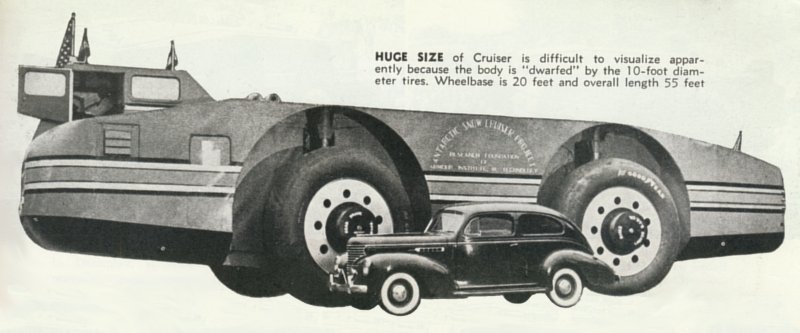




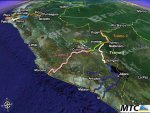





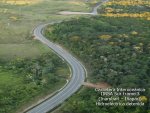
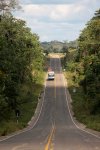
![clip_image001_thumb[1].jpg clip_image001_thumb[1].jpg](https://forum.expeditionportal.com/data/attachments/242/242475-7954faa87b1edcb6cd7dca531b00e295.jpg?hash=eVT6qHse3L)








